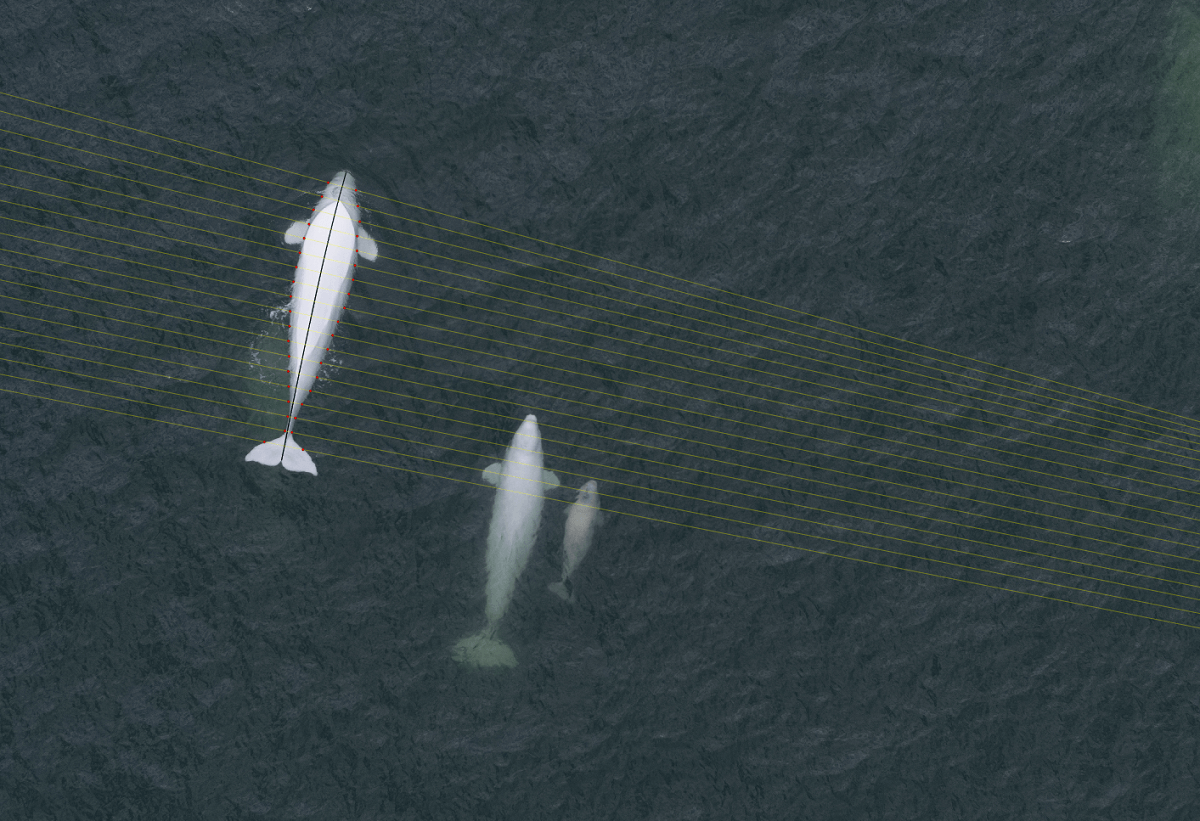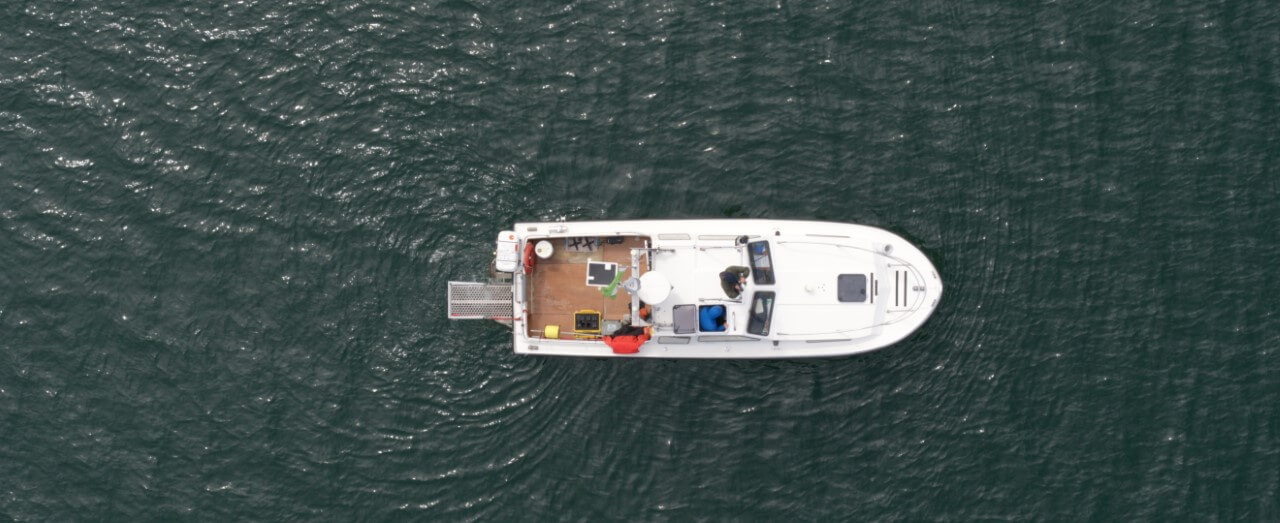By Alexandre Bernier-Graveline
How do you imagine the day-to-day life of a member of GREMM’s research team? Hair blowing in the wind, on the water gazing at whales from sunrise to sunset on a warm summer day? That’s our fantasy as well! Rather, our schedule and working conditions are unfortunately at the mercy of the weather, which means we have to be patient, cautious, and in tune with nature. As the singer Renaud put it so well:
“C’est pas l’homme qui prend la mer, c’est la mer qui prend l’homme” [It’s not the man who takes the sea (sets sail), it’s the sea that takes the man”].
In other words, it’s never humans that have the last word or who dictate the rules at sea. But rest assured, when conditions at sea are unfavourable, there’s always work in the office, which is every bit as important as fieldwork. I am therefore taking advantage of a few hours on a rainy day to give you an overview of the 2021 season and the three main beluga projects keeping us busy this year.
Giving a name to every white back
Our flagship and oldest project is our beluga photo-identification work. This project, which began almost 35 years ago, produces thousands of photos of these white whales every summer. Today, this “family album” that we have compiled over the years allows us to better understand the population of St. Lawrence belugas, especially the use of their critical habitat and their social structure. For this research project, we photograph both flanks of each beluga encountered on the water.
In parallel, we carry out regular surveys to record various parameters such as the GPS point of the observations, descriptions of the belugas in each group encountered and the make-up of these groups, as well as any information related to their behaviour, weather conditions, the presence of boats and other species of marine mammals nearby, etc. These data can then be correlated to the belugas’ level of exposure to various anthropogenic threats depending on the areas they frequent, and can thus help us better understand the factors that are influencing their recovery.
Taking their measurements
Another project – swell permitting! – is photogrammetry. This research program uses a drone to capture aerial images of belugas. These images can then be used to measure the animals and thereby estimate the state of their energy reserves. Emaciation can be a sign that the whale is sick, for example, or that it is struggling to feed. Conversely, a well-proportioned whale will tend to be healthier. These aerial images collected simultaneously with photo-ID work also make it easier to match photos of the belugas’ flanks, which can be a real challenge.
A little fat for research
The last research component of the season usually focuses on biopsies. From early September to mid-October, in addition to the other projects, our team is busy collecting tiny pieces of skin and fat from the backs of belugas using a technique called a biopsy. Amongst other things, this small sample can be used to analyze the presence of contaminants, determine the animal’s sex, or detect genetic links with other known individuals.
Working simultaneously on these three components (photo-identification, aerial images, and biopsy) gives us access to an extremely rich database. All of this information represents an invaluable treasure trove that little by little gives us insight into the state of the population and the health of individuals.
Team work
In addition to our most important projects, this summer we also contributed to the work of several collaborators, including the deployment and recovery of hydrophones as well as the recording of drone footage to study beluga behaviour. This year’s projects covered a large swath of territory encompassing the Saguenay, the Middle Estuary, and the Lower Estuary. The extent of our activities is approximately delimited by Baie Sainte-Marguerite in the west, the Kamouraska Islands in the south, and Bic Island in the east.
Completing these multiple projects and tasks simultaneously requires flawless coordination that each team member must be familiar with. Out on the water, the Bleuvet usually carries a four-person crew. The first person photographs the belugas and takes notes (composition of groups and descriptions of belugas, weather conditions, presence of boats and marine mammals), while a second crew member operates the boat and ensures respectful approaches to the animals while looking for an angle and a distance that might allow for quality photos. A third person operates the drone. Lastly, an assistant helps with drone takeoffs and landings as well as all other tasks requiring a second pair of eyes or hands.
Teamwork is essential in research, as is optimism. Indeed, despite the inclement weather of the past few weeks, the team is keeping their spirits up because who knows what tomorrow might bring!








